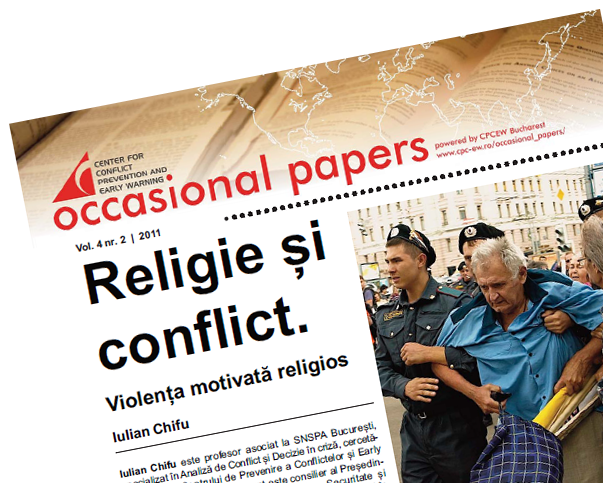nr.2 / vol. 4 – Religie şi conflict. Violenţa motivată religios
The modernization and globalization came with challenges to the identity needs of the persons, both individual and group identities, and there is a search for moral values and references, which should come from the big religions and from the combination and balance of religion and cultural background, national traditions and humanitarian behavior. The tendency of accessing a comfortable and desired group identity is to be assumed by the secular form of religion and tolerance of free spirit, competitive ideas and acceptance for scientific input in the debate. Multiculturalism has to respond to these problems as well. Some are side effects of multiculturalism, some are a wrong interpretation of the multicultural model.
Individual identity and group identity are both needed by the individual. There is a huge versatility in shifting and choosing the group identity, the one which is the most appealing for the individual. Sociological and psychological studies on the suicide bombers that failed, in jails all over the world, revealed some patterns: high individual identity problems, need for a group identity, for prestige, for meaningful life, and that what leaded to conversion, radicalization and moving to the actions.
We are witnessing several trends in the post-modern world: Immigration and alienation in big cities, inadaptability at the second and third generation immigrants and some new forms of radicalization in Germany, France, the US. The second would be the phenomenon of convertion to either radical forms of religions, Jihadist ones – or so called “new religions” – Apocalyptic, Hedonistic or Satanist ones. The problem still stands in the hands of the big religions of the world. They became more and more commercial institutions – selling faith and moral comfort, and less – and less moral references models. That leads our citizens to move to find other alternatives, and falling in the hands of radical Islam, Jihadist sects and crocs in other types of cults and newly born religions.
citeste articolul complet în Occasional Papers nr.2 vol 4

